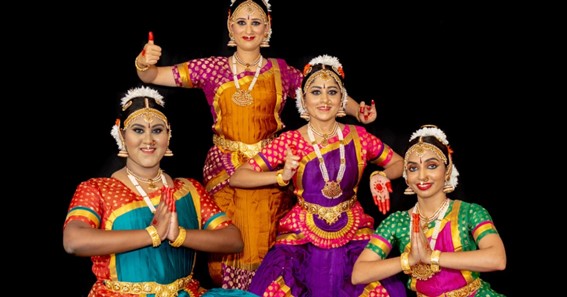Are you curious to know what is arangetram? You have come to the right place as I am going to tell you everything about arangetram in a very simple explanation. Without further discussion let’s begin to know what is arangetram?
In the realm of Indian classical dance, the Arangetram holds a special significance as a milestone event in a dancer’s journey. Literally meaning “ascending the stage” in the Tamil language, Arangetram refers to the debut solo performance of a student after years of rigorous training. In this blog post, we will delve into the world of Arangetram, exploring its origins, significance, and the awe-inspiring experience it offers for both dancers and audiences.
What Is Arangetram?
Arangetram originated in the southern state of Tamil Nadu, India, where the classical dance forms of Bharatanatyam, Kuchipudi, and Odissi flourished. It is believed to have originated in the temples of Tamil Nadu, where dancers would undergo years of intensive training under the guidance of experienced gurus (teachers). Arangetram emerged as a tradition to showcase the mastery of the dance form and mark the transition of a student from a learner to a performer.
The Arangetram Experience
- Years of Training: Arangetram represents the culmination of years of dedicated training and discipline. Students typically begin learning their chosen classical dance form at a young age and undergo rigorous training under the guidance of a guru. They spend countless hours perfecting intricate footwork, hand gestures, facial expressions, and body postures, embodying the essence of the dance form.
- Artistic Expression: The Arangetram offers dancers an opportunity to showcase their artistic expression, technical prowess, and storytelling abilities. The performance usually includes a repertoire of classical dance pieces that encompass various aspects of the dance form, including rhythmic footwork, graceful movements, and emotive storytelling through facial expressions and hand gestures.
- Accompaniment and Collaboration: A key element of the Arangetram is the live musical accompaniment. Musicians, including vocalists, instrumentalists, and percussionists, accompany the dancer, providing a dynamic and interactive experience. The synergy between the dancer and the musicians enhances the overall performance, creating a vibrant atmosphere filled with rhythm and melody.
- Stage Presence and Confidence: The Arangetram serves as a platform for dancers to develop stage presence, confidence, and the ability to engage with an audience. It tests their ability to perform under the spotlight, captivate the audience’s attention, and maintain poise and composure throughout the performance.
- Cultural Preservation: Arangetram plays a significant role in preserving and promoting Indian classical dance forms. By showcasing the talent and dedication of young dancers, it fosters the continued practice and appreciation of these ancient art forms, ensuring their legacy for future generations.
Audience Experience And Appreciation
Attending an Arangetram is a captivating experience for the audience. It offers an opportunity to witness the beauty, grace, and technical brilliance of Indian classical dance firsthand. The audience becomes immersed in the rhythmic melodies, the intricate movements, and the storytelling aspect of the performance. It is a celebration of Indian culture and tradition, showcasing the rich heritage and artistic excellence of classical dance forms.
Conclusion
The Arangetram is a milestone event in the journey of Indian classical dancers. It represents the culmination of years of dedication, training, and artistic development. Through this debut performance, dancers not only showcase their talent and technical mastery but also contribute to the preservation and promotion of Indian classical dance forms. For the audience, witnessing an Arangetram is an enchanting experience that brings forth the beauty, grace, and cultural richness of these ancient art forms. The Arangetram serves as a testament to the power of dance to transcend boundaries and connect with audiences on a profound level.
FAQ
What Is The Purpose Of Arangetram?
The word “arangetram” means “ascending the stage”. It is a solo dance debut – that means it’s the first time a student performs a full concert by themselves. It is a major event where you invite close friends and family as well as other members of the artistic community.
What Is The Arangetram Ceremony?
Arangetram is a portmanteau of the Tamil words for stage (“arangu”) and ascent (“etram”) and its literal translation is “climbing or ascending the stage”. In the context of dance, the word refers to the graduation ceremony in which the guru presents his or her pupil to the public.
What Age Is Arangetram For?
The arangetram is no small undertaking for the student — nor the family. Girls start as early as age 3 or four studying anywhere from eight to 10 years before teachers deem they are ready for their arangetram.
Is Arangetram Necessary?
An Arangetram is a significant event in the life of a Bharatanatyam dancer, as it marks the end of their training and the beginning of their career. It is a showcase of the dancer’s skills and the culmination of years of hard work and dedication.
I Have Covered All The Following Queries And Topics In The Above Article
What Is Arangetram
What Is Arangetram Ceremony In Hindi
What Is Arangetram Means
What Is Arangetram Dance
What Is Arangetram In Bharatanatyam
What Is Radhika Merchant Arangetram
What Is Arangetram In Hindi
What Is Arangetram
What is the meaning of Arangetram
What is the purpose of Arangetram
